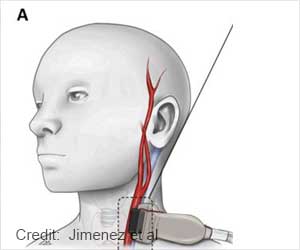Severe war injuries and post traumatic stress disorder (PTSD) put military service men and women at risk of having high blood pressure later.

The new study reviewed records of 3,846 U.S. service members in the Iraq and Afghanistan wars who received intensive care for combat injuries sustained from February 2002 until February 2011. Their average age when they were wounded was 26. More than 14 percent of combatants developed high blood pressure at least 90 days after being wounded. How severe initial injuries were, and how frequently PTSD was noted in medical records after the wounding, separately affected later risk of hypertension, the study found.
"What we found surprised us. PTSD does appear to increase the risk of hypertension," said Maj. Ian J. Stewart, M.D., the study's senior author, who works from the David Grant U.S. Air Force Medical Center at Travis Air Force Base in California. "But we thought that hypertension risk from the injury would depend on the presence of PTSD. Instead, increased hypertension risk is additive to the injury itself," said Stewart.
The study incorporated each service member's Injury Severity Score, a scale ranging from 1 to 75 that gauges the total impact of multiple injuries, based on assessment of six body regions.
For instance, a third-degree burn covering 20 percent of the skin's surface, plus a concussion and minor scalp cut, would yield a score of 11. A traumatic amputation at the hip would be scored at 16, and a 60 percent third-degree burn plus six rib fractures would be scored at 41.
The study found that for every five-point increase in Injury Severity Score, overall risk of high blood pressure rose 5 percent. Patients with an Injury Severity Score of 25 or lower and no recorded PTSD diagnosis had the lowest hypertension risk.
Advertisement
As in other studies, this research found that age, acute kidney injury and race were associated with risk of developing high blood pressure. Risk increased about 5 percent for every year older a veteran was, and was 69 percent higher for African-Americans, compared with whites. Suffering acute injury to the kidneys, which play a key role in regulating blood pressure, also was linked to a higher risk for hypertension.
Advertisement
The study included up to 10 years' worth of records following each wounded service member, reflecting care in both Department of Defense health facilities and medical visits through the TRICARE program, a health care program of the U.S. Department of Defense Military Health System.
Stewart and his colleagues suspect that development of high blood pressure and other chronic medical conditions after combat injury might generally be traced through three routes:
Through PTSD or other mental health conditions that arise, such as depression or anxiety;
Through physiological changes, including inflammatory or metabolic responses,
Or due to lifestyle changes such as smoking or gaining weight. More research into these areas is needed, the authors note.
High blood pressure is defined as blood pressure readings 130/80 mm Hg and above. Untreated, it can lead to stroke, heart and kidney disease, vision loss and sexual dysfunction.
Strengths of the study include the high number of medical visits recorded for each patient, and the use of Department of Defense databases that allowed researchers to track patients over time rather than rely on individuals' own accounts. However, the study did not follow patients in real time, and couldn't control for differences in how blood pressure readings were taken. The study also lacked biological data such as measurements of inflammatory markers, and information about behaviors such as smoking that impact future health.
Source-Eurekalert















